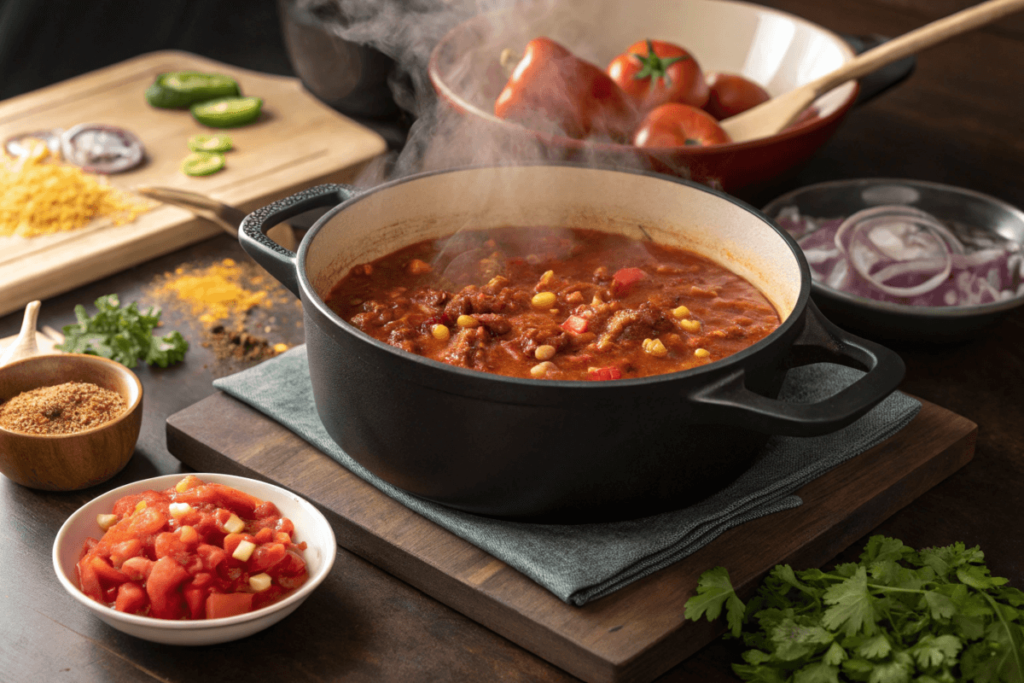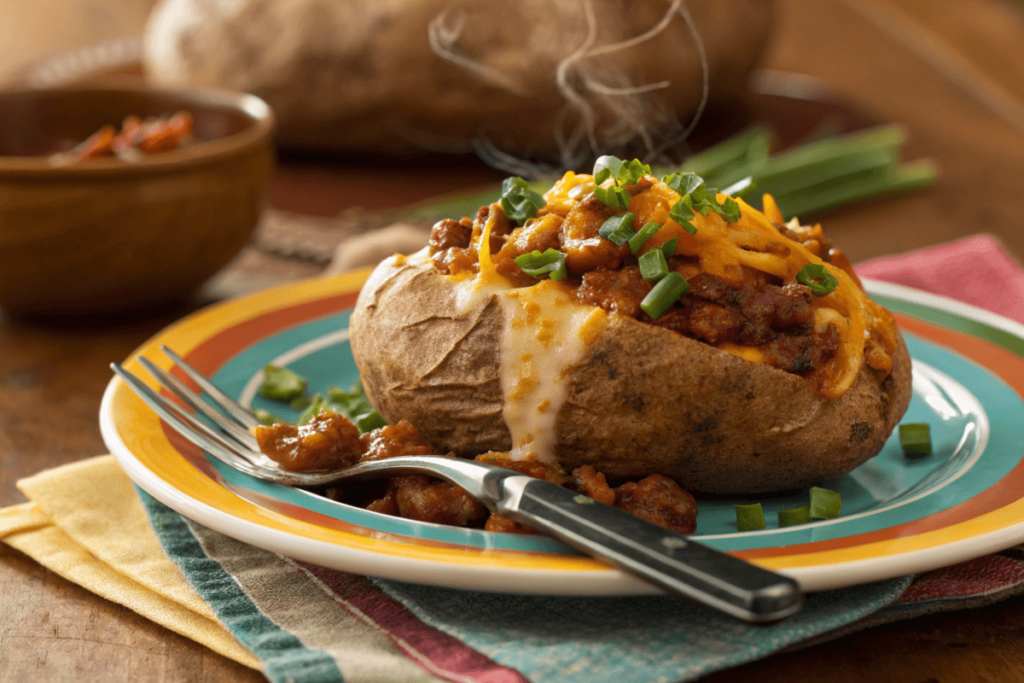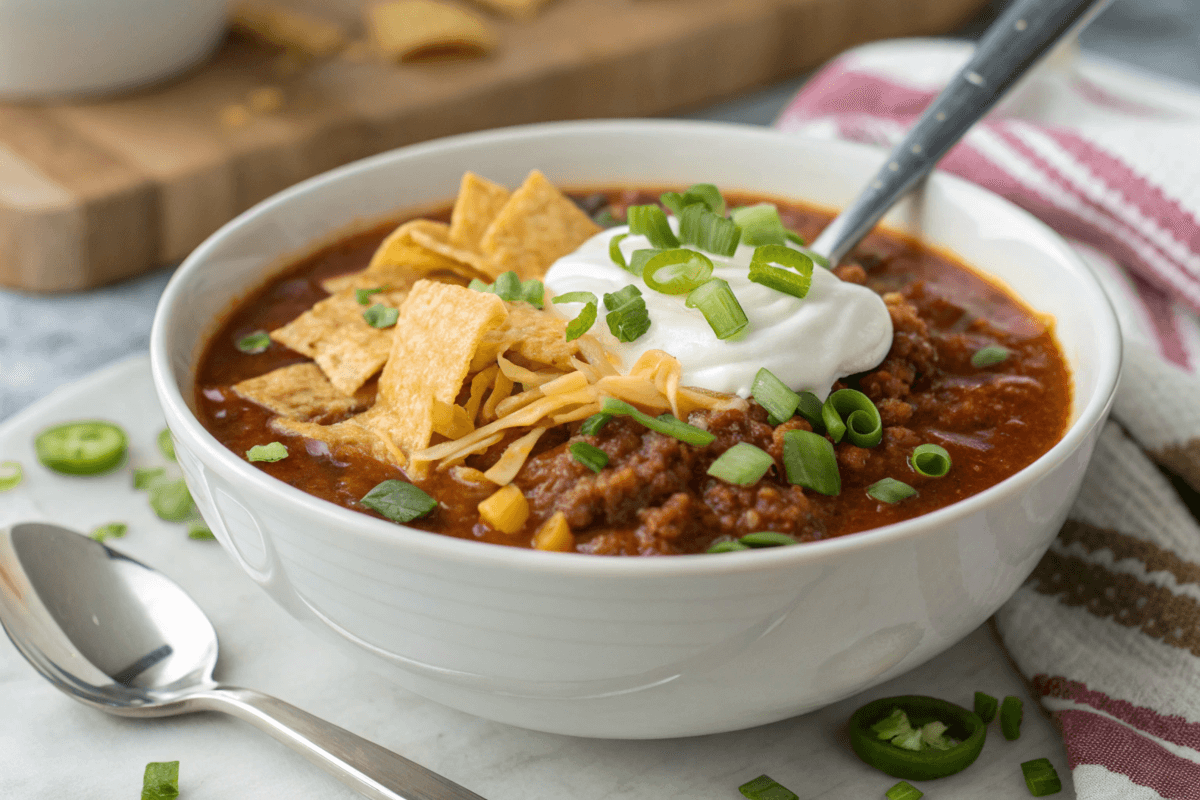Why is My Taco Soup So Watery?
A hearty taco soup is a comforting, flavorful meal that brings warmth to the table. But what happens when your taco soup turns out too watery, losing its thick, rich texture? It can be disappointing, but don’t worry—there’s a fix! In this article, we’ll explore the common reasons why taco soup becomes watery and share tips and tricks to prevent it from happening again. From cooking techniques to ingredient choices, you’ll learn how to achieve a perfectly thick and delicious taco soup every time.
Common Reasons for Watery Taco Soup
Using Too Much Liquid
One of the most common culprits behind a watery taco soup is the addition of excessive liquid. Whether it’s broth, water, or a combination of both, too much liquid dilutes the soup’s consistency and flavors. Many home cooks rely on guesswork when adding liquid, leading to soups that are more broth-like than intended. Always measure the liquid carefully, following your recipe closely, to avoid this pitfall.
To fix this, reduce the liquid portion slightly in your next batch. Remember, you can always add more later if needed, but it’s hard to take liquid out once it’s in the pot.
Insufficient Thickening Agents
Another reason your taco soup might lack thickness is the absence of proper thickening agents. Ingredients like cornstarch, flour, or even pureed beans can transform your soup into a hearty dish. Without them, the soup base remains thin and watery.
For instance, cornstarch is an excellent go-to thickener. Simply mix a teaspoon of cornstarch with a small amount of water to create a slurry, then stir it into the soup. This method thickens the broth without altering its flavor.
High Water Content in Ingredients
Certain ingredients, like fresh tomatoes, canned beans, or vegetables, naturally contain a lot of water. When these release their moisture during cooking, they can unintentionally make your taco soup watery. Additionally, using frozen ingredients that thaw during cooking can add to the water content.
To counter this, sauté high-water-content ingredients before adding them to the soup. This step helps release some of their moisture early, reducing the risk of excess water in your final dish.
By understanding these common issues, you’re already on your way to crafting a taco soup that’s thick, satisfying, and bursting with flavor. Stay tuned for the next part, where we’ll dive into prevention strategies to keep your taco soup from turning watery again!
How to Prevent Watery Taco Soup in Future Recipes
Measuring Liquid Properly
One of the simplest ways to prevent watery taco soup is by carefully measuring the liquids in your recipe. Instead of relying on guesswork, stick to the recommended amounts of broth or water. If you’re improvising or making adjustments, start with less liquid—you can always add more as needed. Precise measurements ensure a balance between liquid and solids, helping to maintain a thick, hearty texture.
Using kitchen tools like measuring cups is crucial for consistency. Avoid adding water unnecessarily when rinsing canned beans or vegetables; instead, drain them thoroughly to prevent excess liquid from sneaking into your soup.
Choosing Ingredients Carefully
Selecting the right ingredients plays a significant role in avoiding a watery outcome. For example, canned tomatoes and beans often contain extra liquid, which can thin the soup. Always opt for low-moisture alternatives, or take the time to drain and pat dry wet ingredients before adding them to the pot.
Additionally, choosing starch-rich vegetables like potatoes or corn can naturally thicken the soup. These ingredients not only improve texture but also add depth to the flavor profile.
Cooking Techniques to Enhance Thickness
Proper cooking techniques can make a world of difference. Sautéing vegetables before adding them to the soup helps release excess moisture and intensifies their flavors. Similarly, allowing your soup to simmer uncovered will reduce the liquid content and create a thicker consistency.
For slow-cooker recipes, keep in mind that condensation often adds extra water to the dish. To combat this, use slightly less broth or place a paper towel under the lid to absorb excess steam.
For a step-by-step taco soup recipe, check out this guide on Taco Soup Recipe.
Quick Fixes for Watery Taco Soup

Adding Thickeners
If you’ve already made your taco soup and find it too watery, don’t fret—there are quick fixes! Adding thickening agents like cornstarch, flour, or even instant mashed potatoes can work wonders. Simply create a slurry with water and your chosen thickener, then stir it into the simmering soup. Within minutes, the soup will transform into a rich, creamy delight.
Pureeing a portion of the soup and mixing it back in is another natural thickening method. This approach preserves the flavors while boosting the soup’s body.
Reducing the Liquid Through Simmering
Sometimes, all it takes is a bit of patience. Allow your taco soup to simmer uncovered for 10-15 minutes to let the excess liquid evaporate. Stir occasionally to prevent sticking, and taste as you go to ensure the flavors remain balanced.
For soups cooked in a slow cooker, transfer the soup to a stovetop pot for reduction. This technique speeds up the thickening process while giving you better control over the consistency.
Blending Part of the Soup
Blending is a game-changer when it comes to fixing watery soups. Use an immersion blender to puree some of the ingredients right in the pot. This trick works especially well with beans, tomatoes, and vegetables, as their natural starches help thicken the base.
Alternatively, transfer a portion of the soup to a blender, puree until smooth, and return it to the pot. This method is perfect for achieving that creamy, velvety texture without compromising the dish’s hearty essence.
Best Thickeners for Taco Soup
Flour and Cornstarch
When it comes to thickening taco soup, flour and cornstarch are two of the most reliable options. Flour works well for soups that need a subtle boost in thickness. To use it, whisk a tablespoon of flour with a small amount of cold water to form a smooth paste, then stir it into the soup. Let the soup simmer for a few minutes to remove the raw flour taste.
Cornstarch, on the other hand, provides a more concentrated thickening effect. Mix one teaspoon of cornstarch with two teaspoons of water, then add the slurry to your soup. You’ll notice the consistency change quickly as it simmers. Cornstarch is ideal when you want to avoid altering the flavor of your taco soup.
Beans and Lentils
For a hearty and natural way to thicken your taco soup, consider blending cooked beans or lentils. These ingredients not only add a thicker texture but also enhance the nutritional value of your soup. Simply take a cup of cooked beans (black beans, pinto beans, or chickpeas work great) and puree them in a blender. Stir the puree back into the soup to achieve a rich, creamy consistency.
This method works particularly well for those aiming for a plant-based, gluten-free solution. Plus, beans and lentils add a subtle earthy flavor that complements the spices in taco soup.
Instant Mashed Potatoes
If you’re in a hurry, instant mashed potatoes are a quick and effective thickener. Just sprinkle a tablespoon or two directly into the soup, then stir well to avoid clumps. The potatoes will absorb excess liquid and give your taco soup a creamy texture without overpowering its flavor.
For more ideas, check out our 5-Ingredient Taco Soup recipe, perfect for quick and flavorful meals.

Enhancing Flavor While Fixing Consistency
Using Broth Instead of Water
One common mistake that contributes to watery taco soup is relying too much on plain water as the base. By using chicken, beef, or vegetable broth instead, you’ll not only improve the texture but also boost the flavor profile. Broth adds depth and richness that plain water simply can’t provide. Opt for low-sodium versions to maintain control over the soup’s saltiness.
When you combine this technique with proper thickening methods, you’ll never have to wonder, Why is my taco soup so watery?, again.
Adding Creamy Ingredients
Incorporating creamy ingredients like sour cream, heavy cream, or even Greek yogurt is another great way to thicken taco soup while enhancing its flavor. These ingredients blend seamlessly into the broth, giving it a velvety consistency. Be sure to add them near the end of the cooking process to prevent curdling.
You can also experiment with shredded cheese, which not only thickens but adds a delightful cheesy taste that pairs well with taco flavors.
Incorporating Seasonings to Balance Taste
Fixing a watery taco soup isn’t just about thickening—it’s also about balancing the flavors. Watery soups often taste diluted, so it’s essential to adjust the seasoning as you thicken. Add more taco seasoning, cumin, paprika, or a pinch of cayenne for a kick of heat. Fresh herbs like cilantro or a squeeze of lime juice can also brighten the flavors.
To elevate your taco soup game even further, pair it with toppings like avocado slices, crispy tortilla strips, or a dollop of guacamole. For more soup inspiration, check out other recipes on our website!
With these tips, you’ll create a taco soup that’s thick, flavorful, and utterly satisfying. Stay tuned for the FAQs section to tackle more common soup dilemmas.
FAQs Section
Why Does My Soup Turn Watery After Cooling?
It’s common for taco soup to appear thicker while it’s hot but turn watery once cooled. This happens because certain ingredients, like starches, absorb liquid as they cook, but release it as the soup cools. Additionally, fats solidify when cold, changing the texture of the broth. To prevent this, try thickening the soup slightly more than needed during cooking. When reheating, stir the soup thoroughly to redistribute the ingredients and restore its consistency.
What’s the Best Way to Thicken Soup Without Changing Flavor?
If you’re concerned about altering the taste of your taco soup, opt for neutral thickeners like cornstarch or instant mashed potatoes. Both options work quickly and won’t impact the flavor. Another method is to puree a small portion of the soup and mix it back in, which thickens the base naturally while keeping the same delicious taste. This is a lifesaver when you’re asking yourself, Why is my taco soup so watery?
Can I Use Cheese to Thicken Taco Soup?
Absolutely! Cheese not only adds a creamy texture but also enhances the flavor of taco soup. Cheddar, Monterey Jack, or a Mexican cheese blend works well. Shred the cheese finely and stir it into the soup gradually to avoid clumps. The result is a rich, cheesy soup that’s both thick and flavorful.
How Long Should I Simmer to Reduce Liquid?
Simmering is one of the simplest ways to thicken taco soup. To reduce liquid, let the soup simmer uncovered for 15-20 minutes. Stir occasionally to prevent sticking. This method allows excess moisture to evaporate while concentrating the flavors, giving your soup the perfect consistency.
Conclusion and Final Tips
In summary, fixing a watery taco soup is all about understanding the balance of ingredients, proper cooking techniques, and quick-thickening methods. Whether you’re troubleshooting Why is my taco soup so watery? or trying to enhance its flavor, the tips shared in this article will help you achieve a hearty, satisfying soup every time. Experiment with different thickeners, adjust your seasonings, and don’t be afraid to try new toppings. Remember, the key to perfect taco soup lies in finding what works best for your tastes. Happy cooking, and enjoy your thick, flavorful bowl of taco soup!
Creative Ways to Serve Taco Soup
Using Taco Soup as a Topping
Taco soup is incredibly versatile and can double as a flavorful topping. Spoon the thickened soup over baked potatoes for a hearty, satisfying meal. The rich, spiced broth soaks into the potatoes, creating a delicious blend of textures. Another fun idea is to use taco soup as a topping for nachos. Simply drizzle the soup over a bed of tortilla chips, add shredded cheese, and pop it in the oven for a quick and easy taco soup-inspired snack.
This approach not only transforms the soup into a whole new dish but also ensures that even a slightly watery batch doesn’t go to waste. If you’re still wondering, Why is my taco soup so watery?, serving it this way can turn a problem into an opportunity!
Pairing Taco Soup with Side Dishes
The right side dishes can elevate your taco soup experience. Serve it alongside warm, buttery cornbread for a classic pairing that balances the spicy, savory flavors of the soup. Another great option is a fresh, zesty salad made with lettuce, tomatoes, avocado, and a lime vinaigrette. The salad’s crispness complements the hearty soup, providing a refreshing contrast.
For something indulgent, pair taco soup with cheesy quesadillas. The melted cheese and crispy tortilla offer a delightful contrast to the soup’s richness, creating a well-rounded meal.
Taco Soup Variations to Try
Vegetarian Taco Soup
If you’re looking for a meat-free option, vegetarian taco soup is a fantastic choice. Replace ground beef with protein-packed black beans, chickpeas, or lentils. You can also add extra vegetables like zucchini, bell peppers, or sweet corn for a burst of flavor and nutrition. Season generously with cumin, chili powder, and smoked paprika to maintain the bold taco flavors.
This variation is not only healthy but also naturally thicker, so you won’t have to worry about asking, Why is my taco soup so watery?
Creamy Taco Soup
For a richer, creamier version of taco soup, try adding cream cheese, heavy cream, or coconut milk. These ingredients create a velvety texture that transforms the soup into a comforting, indulgent dish. To enhance the flavors further, stir in shredded cheese or a dollop of sour cream before serving.
Experimenting with these variations ensures that taco soup never gets boring. Each version brings unique flavors and textures, so you can find your personal favorite. Whether it’s creamy, vegetarian, or served in a new way, taco soup is a dish you can endlessly customize and enjoy.

